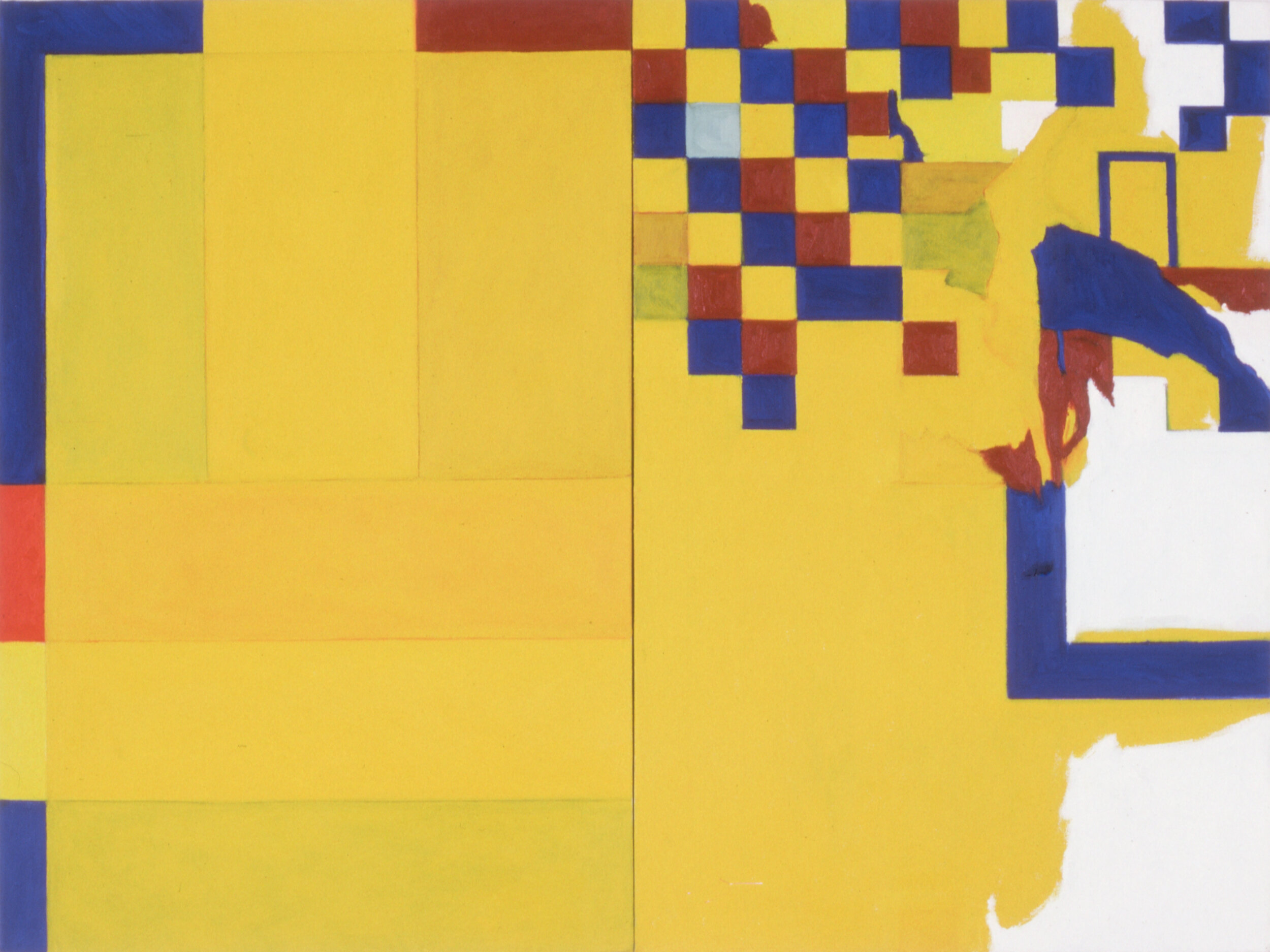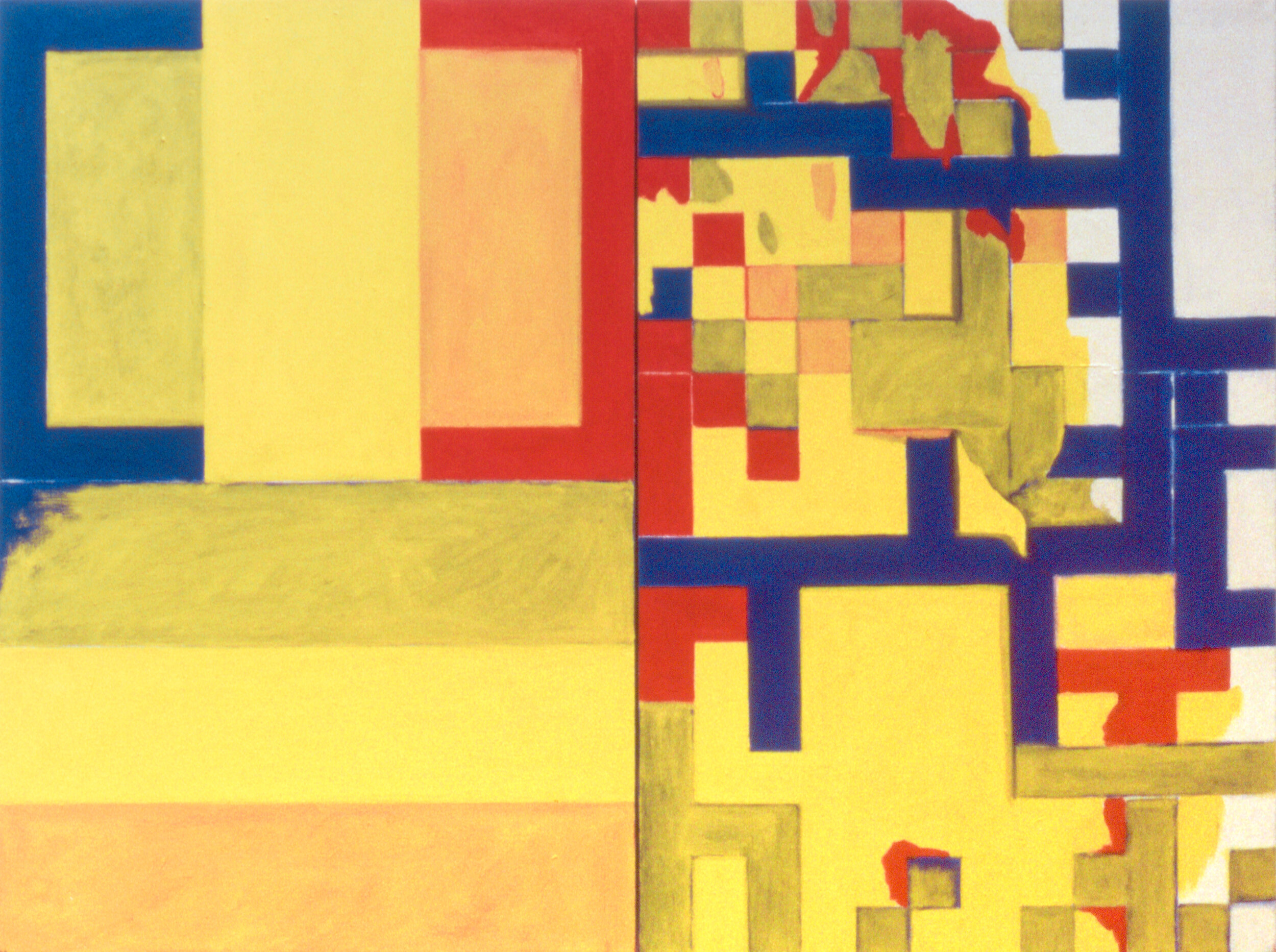THE HIGH VALLEY, SMALL HIGHER VALLEY, SMALL HIGH VALLEY
1980s-1990s
THE HIGH VALLEY
oil on canvas, 6’w x 8’h
SMALL HIGHER VALLEY
oil on canvas, 4’w x 5’h
SMALL HIGH VALLEY
oil on canvas, 3’h x 4’w
THE HIGH VALLEY series frequently juxtaposes two or more disparate orders: a maze, and an incomplete version of maze, banner, and partial iterations of the banner, with the field diagrammatic—all incomplete yet finished, not a ruin. In other words, a collection of visual devices, becomes the occasion for asserting and denying the commonplace, by introducing a critical inquiry into the ordering of things. Meanwhile, these foreground two yellows, two reds and two blues, to ask the question: which is the “true” one, with relative rather than absolute terms conditioning the play.
Compare the series SMALL HIGH VALLEY and SMALL HIGHER VALLEY-- loose federations of structural doubling, transposition, and morphing, wherein activity appears at the periphery, frames-within-frames, and non-synonymous reds, yellows, and blue. The manic foregrounding of devices is taken for granted in a superfluity of discourse.
Important are these reviews of early exhibitions:
Glueck, Art in Review, The New York Times, Dec. 19, 1997
http://marjoriewelish.com/MW-review-6.html
http://marjoriewelish.com/MW-review-7.html
http://marjoriewelish.com/MW-review-8.html
http://slought.org/resources/of_the_diagram
From the conference (and conference book): Essays on this series feature a discriminating approach to
the diptych as structure, by Joseph Masheck:
“To paint diptychs—paintings on paired panels or canvases—means not only not painting paintings on a single panel, but not painting triptychs—paintings on three panels. […]when one half of a consular diptych is missing, there can be a reasonable sense of what is the missing half should look like, buffered by a skepticism that something about it will prove not simply like unto but rather as like as equivalently different.” From “Vexing the Diptych with Asymmetry”
And the diptych as a mode of thought, by Kenneth Baker:
“That is one reason she favors diptychs, I believe, because even if completed, or abandoned, as artifacts, they can never be exhausted as objects of interpretive consumption. Not because they are inherently involving as format, but because they enforce a process of cross-checking.” From “MIND: THE GAP”
























